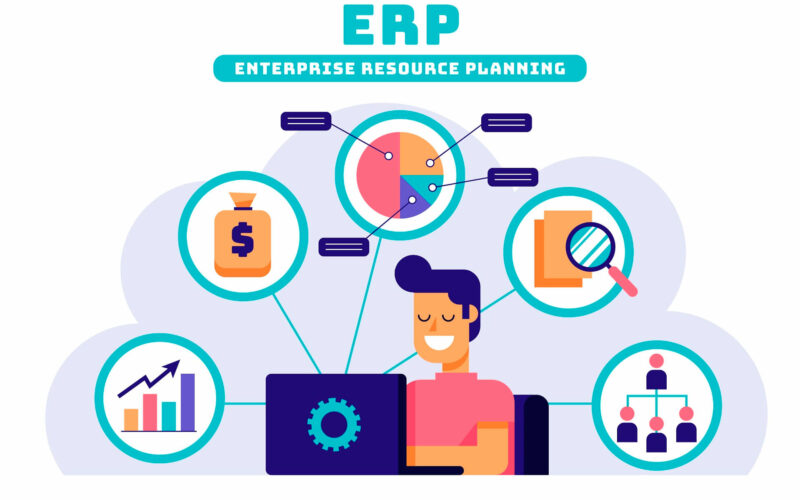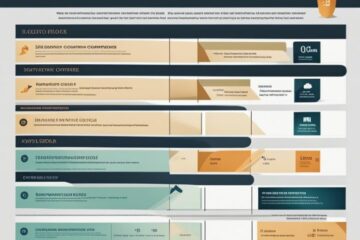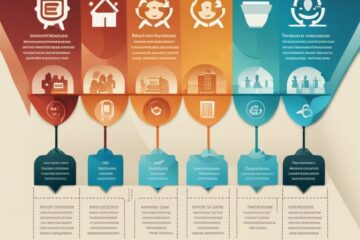Most businesses today rely on Enterprise Resource Planning (ERP) software to streamline their operations and increase efficiency. ERP software is a powerful tool that integrates various aspects of a business such as supply chain management, human resources, finance, and more into one centralized system. This comprehensive guide will provide you with all the imperative information you need to understand ERP and how it can benefit your organization.
Understanding the critical role ERP plays in modern business operations is imperative for anyone looking to stay competitive in today’s fast-paced market. From improving productivity and decision-making to enhancing customer satisfaction, ERP software offers a wide range of benefits. However, implementing ERP is not without its challenges. It’s crucial to consider factors like cost, implementation time, and user training to ensure a successful ERP deployment.
Whether you’re a small start-up or a large corporation, having a solid grasp of ERP fundamentals is key to leveraging this technology to its full potential. This guide will investigate into the key features, benefits, and best practices of ERP software, equipping you with the knowledge needed to make informed decisions for your business. Stay tuned to discover how ERP can revolutionize the way you manage your enterprise.
Key Takeaways:
- ERP stands for Enterprise Resource Planning, which is a comprehensive software solution that integrates and manages all aspects of a business operation.
- ERP systems help streamline processes, improve efficiency, and provide real-time visibility into various business functions.
- Modules within ERP software cover areas such as finance, human resources, sales, inventory, supply chain, and more, allowing for seamless coordination across departments.
- Implementing an ERP system requires careful planning, customization, training, and ongoing support to ensure successful adoption by employees.
- Cloud-based ERP solutions offer flexibility, scalability, and cost-effectiveness compared to traditional on-premise systems.
- Data security is a critical aspect of ERP, as these systems house sensitive business information that must be protected from cyber threats.
- ERP software can support businesses of all sizes, from small startups to large enterprises, by providing tools to optimize operations and drive growth.
Understanding ERP Systems
It is vital to understand the core components of Enterprise Resource Planning (ERP) systems to grasp the full functionality of this software. ERP systems consist of various integrated modules that operate in real-time, enabling businesses to manage and streamline their operations efficiently. These core components include modules for finance, human resources, supply chain management, customer relationship management, and more.
Core Components of ERP
To effectively utilize an ERP system, it is crucial to comprehend the core components that make up the software. The finance module of an ERP system handles financial transactions, budgeting, and reporting. The human resources module manages employee data, payroll, benefits, and compliance. The supply chain management module oversees inventory, purchasing, and logistics. The customer relationship management module tracks sales, marketing, and customer service interactions.
How ERP Integrates Business Processes
An ERP system integrates various business processes by centralizing data and workflows across the organization. This integration allows different departments to access and share information seamlessly, leading to better collaboration and decision-making. By consolidating data from different areas of the business, ERP facilitates a holistic view of operations, enabling companies to optimize processes and resources efficiently.
Understanding how ERP integrates business processes is paramount for organizations looking to enhance their operational efficiency and competitiveness. By aligning workflows and data streams through an ERP system, companies can eliminate silos, reduce redundant tasks, and improve communication across departments. The interconnected nature of ERP promotes a more agile and responsive business environment, enabling companies to adapt quickly to market changes and customer demands.
Cloud vs. On-Premise ERP Solutions
When considering Enterprise Resource Planning (ERP) solutions, one of the fundamental decisions companies face is whether to opt for a cloud-based or on-premise system. Cloud ERP solutions, hosted on remote servers accessed via the internet, offer several advantages over traditional on-premise solutions installed and managed locally within a company’s infrastructure.
Cloud ERP solutions provide unparalleled flexibility and scalability. With cloud-based systems, businesses can easily adjust their computing resources according to their needs, scaling up during periods of high demand and scaling down during quieter times. This flexibility allows organizations to adapt quickly to changing market conditions and business requirements without the need for significant upfront investments in hardware and infrastructure.
Moreover, cloud ERP solutions offer enhanced accessibility and mobility. Since data is stored in the cloud, authorized users can access the system from any location with an internet connection, enabling remote work and facilitating collaboration among dispersed teams. This accessibility fosters agility and efficiency, empowering employees to make informed decisions in real-time, regardless of their physical location.
Additionally, cloud ERP solutions often boast faster implementation times and lower total cost of ownership compared to on-premise alternatives. With cloud-based deployment, companies can avoid the lengthy installation processes and ongoing maintenance associated with on-premise solutions. Instead, they can quickly deploy the ERP system and benefit from regular updates and improvements delivered seamlessly by the provider.
However, it’s essential to recognize that on-premise ERP solutions still hold certain advantages, particularly concerning data control and security. For organizations operating in highly regulated industries or with stringent data privacy requirements, on-premise systems may offer greater peace of mind by allowing them to maintain direct control over their data and infrastructure.
In conclusion, the choice between cloud and on-premise ERP solutions ultimately depends on the specific needs, priorities, and constraints of each organization. While cloud ERP solutions offer unparalleled flexibility, accessibility, and cost-effectiveness, on-premise systems provide greater control and security for businesses with particular regulatory or security concerns. By carefully evaluating these factors and aligning them with their strategic objectives, companies can determine the most suitable ERP deployment model to support their long-term success.
Types of ERP Systems
After implementing an ERP system, businesses must choose the right type of ERP software to meet their specific needs. There are several types of ERP systems available in the market, each catering to different industries and business sizes. Understanding the various types of ERP systems is crucial for making an informed decision. Here are some of the common types of ERP systems:
- Industry-Specific ERPs: These ERP systems are tailored to meet the unique needs of specific industries such as manufacturing, healthcare, retail, and more.
- Generalist ERPs: These ERP systems are generic and offer a wide range of functionalities that can be customized to suit various industries and business requirements.
- Open Source vs. Proprietary ERP Systems: Open source ERP systems have their source code accessible to the public, while proprietary ERP systems have restricted access to their code.
- Horizontal and Vertical ERP Solutions: Horizontal ERP solutions offer a broad set of functionalities that are applicable across various industries, while vertical ERP solutions are specifically designed for a particular industry.
Industry-Specific ERPs
On the other hand, industry-specific ERPs are designed to address the unique challenges and requirements of a particular sector. These systems offer specialized features and functionalities tailored to meet the specific needs of industries such as manufacturing, healthcare, construction, and more. Industry-specific ERPs often come with industry-specific modules, reporting tools, and compliance features that are important for businesses operating in those sectors. Implementing an industry-specific ERP can streamline processes, improve efficiency, and ensure compliance with industry regulations.
Moreover, industry-specific ERPs are developed based on best practices and standards within a particular industry, making them a fitting choice for businesses looking to optimize their operations. These systems are built to handle industry-specific workflows, data management requirements, and regulatory compliance needs. By choosing an industry-specific ERP, businesses can benefit from pre-configured settings and industry expertise that can help them achieve their business objectives more effectively.
You should consider investing in an industry-specific ERP if your business operates in a niche industry with unique processes and compliance requirements. These systems are designed to address the specific challenges faced by businesses in your industry, offering targeted solutions that can help you streamline operations, reduce costs, and stay competitive in the market.
Open Source vs. Proprietary ERP Systems
ERPs come in two main forms: open source and proprietary. Open source ERP systems provide businesses with access to the source code, allowing them to modify and customize the software as needed. On the other hand, proprietary ERP systems have closed source code, meaning that businesses must rely on the software vendor for updates, maintenance, and support. Organizations must consider factors such as cost, flexibility, and support when choosing between open source and proprietary ERP systems.
Plus, open source ERP systems offer businesses more flexibility and control over their software, allowing for greater customization and scalability. However, they may require more technical expertise to implement and maintain. On the other hand, proprietary ERP systems often come with dedicated support, regular updates, and advanced features out of the box. Businesses need to weigh the pros and cons of each type of ERP system to determine which one best aligns with their business goals and budget.
Horizontal and Vertical ERP Solutions
Horizontal ERP solutions offer a broad set of functionalities that are suitable for businesses across various industries. These systems are designed to address common business processes such as accounting, human resources, supply chain management, and more. On the other hand, vertical ERP solutions are tailored to meet the specific needs of a particular industry or sector. These systems come with industry-specific features, modules, and workflows that cater to the unique requirements of businesses in that industry.
Open source ERP systems have gained popularity in recent years due to their cost-effectiveness and customization capabilities. Businesses can access the source code of open source ERP systems, allowing them to modify the software to suit their specific needs. However, open source ERP systems may require more technical expertise to implement and maintain compared to proprietary ERP systems. Organizations must carefully evaluate their requirements and resources before choosing between open source and proprietary ERP solutions.
Key Features of ERP Software
To effectively manage all aspects of a business, ERP software comes equipped with a wide range of features that streamline operations and enhance productivity. Below are some of the key features that make ERP software indispensable for modern businesses:
- Financial Management: Enables businesses to manage financial processes such as accounting, budgeting, and financial reporting.
- Supply Chain Management: Helps businesses optimize the flow of goods and services from procurement to delivery.
- Human Resources Management: Streamlines HR processes including payroll, benefits administration, and employee performance tracking.
- Customer Relationship Management: Allows businesses to track and manage interactions with customers to improve customer satisfaction and loyalty.
- Inventory and Order Management: Assists in tracking inventory levels, managing orders, and optimizing the supply chain.
- Data Analytics and Reporting: Provides insightful data analysis and reporting capabilities to inform strategic decision-making.
After implementing an ERP system with these key features, businesses can experience improved efficiency, increased visibility into operations, and enhanced decision-making capabilities.
Financial Management
You rely on accurate financial data to make informed decisions that drive your business forward. An ERP system’s financial management module ensures that you have real-time access to critical financial information, helping you monitor cash flow, generate financial reports, and streamline accounting processes. With features such as general ledger, accounts payable/receivable, and financial reporting, you can efficiently manage your company’s finances and ensure compliance with regulations.
Supply Chain Management
On the operational side, supply chain management is crucial for ensuring that your business runs smoothly. An ERP solution provides tools to optimize the supply chain, from procurement to distribution. It helps you track inventory levels, manage suppliers, and streamline the order fulfillment process. By automating these processes and providing visibility into the supply chain, you can minimize costs, reduce lead times, and improve customer satisfaction.
The ability to integrate supply chain processes within the ERP system enhances collaboration between departments, suppliers, and customers. With a centralized platform for managing supply chain activities, you can make data-driven decisions, identify areas for improvement, and respond quickly to changing market demands.
Human Resources Management
Management of human resources is vital for fostering a productive and engaged workforce. An ERP system’s HR management module offers tools for recruitment, onboarding, training, and performance evaluation. By centralizing employee data and automating HR processes, you can streamline administrative tasks, improve workforce planning, and boost employee satisfaction. The self-service capabilities allow employees to access information easily, reducing the burden on HR staff and enhancing employee engagement.
Any organization looking to optimize its HR processes and create a positive work environment can benefit from an ERP system with robust human resources management features. By integrating HR processes with other departments and aligning them with strategic goals, businesses can cultivate a culture of transparency, collaboration, and continuous improvement.
Customer Relationship Management
Today, businesses must prioritize customer relationships to stay competitive in the market. An ERP system’s CRM module helps businesses build and nurture relationships with customers by tracking interactions, managing sales opportunities, and providing personalized customer service. With a centralized database of customer information, you can anticipate customer needs, personalize marketing campaigns, and improve customer satisfaction.
Supplying your sales and marketing teams with a 360-degree view of customer interactions, an ERP system empowers them to deliver exceptional customer experiences. By analyzing customer data and behavior, businesses can identify trends, tailor products/services to customer preferences, and increase customer retention rates.
Inventory and Order Management
Order processing and inventory management are critical components of running a successful business. An ERP system’s inventory and order management module allows businesses to track inventory levels, manage orders, and optimize the supply chain for efficient order fulfillment. By automating these processes and providing real-time visibility into inventory, businesses can reduce stockouts, prevent overstocking, and improve order accuracy.
For instance, an integrated inventory and order management system can help businesses forecast demand, plan inventory levels, and optimize supply chain operations to meet customer demand efficiently. By centralizing data and automating manual processes, businesses can improve order fulfillment rates, reduce errors, and enhance customer satisfaction.
Data Analytics and Reporting
Management of data analytics and reporting is crucial for informed decision-making in business. An ERP system’s data analytics and reporting capabilities provide powerful insights into business performance, trends, and opportunities. By leveraging advanced analytics tools, businesses can analyze data from various sources, generate customizable reports, and visualize key performance indicators.
Financial management can benefit from data analytics by identifying cost-saving opportunities, forecasting financial performance, and monitoring key financial metrics in real time. By utilizing data-driven insights, businesses can make informed decisions, optimize processes, and drive business growth.
Selecting the Right ERP for Your Business
Assessing Business Needs and Goals
Despite the wide array of ERP solutions available in the market, selecting the right one for your business can be a daunting task. Some of the key considerations to keep in mind when assessing your business needs and goals include understanding your current business processes, identifying pain points and inefficiencies, and defining your long-term objectives. By conducting a thorough assessment, you can pinpoint the specific areas where an ERP solution can bring the most significant benefits.
It is vital to involve key stakeholders from various departments in this assessment process to ensure that all requirements are considered. Some common goals that businesses aim to achieve with an ERP system include streamlining operations, improving data visibility and accuracy, enhancing decision-making capabilities, and enabling scalability for future growth. Understanding your unique business needs and aligning them with your goals is the first step towards selecting the right ERP solution.
Once you have a clear understanding of your business needs and goals, you can create a detailed list of requirements that your ideal ERP solution should meet. Some factors to consider include industry-specific functionality, integration capabilities with existing systems, user-friendliness, scalability, and vendor support services. This list will serve as a guide during the selection process, helping you focus on solutions that align closely with your business objectives.
Market Research on ERP Solutions
Right from the outset, it is crucial to conduct thorough market research on ERP solutions available in the market. It is vital to engage with multiple vendors, attend product demos, and gather as much information as possible about the features, functionalities, and pricing of different solutions. Some key areas to focus on during market research include the reputation of the vendor, customer reviews, and the track record of successful implementations in businesses similar to yours.
- Vendor Reputation: Ensure the vendor has a good reputation in the market.
- Customer Reviews: Look for feedback from existing customers to gauge satisfaction levels.
- Successful Implementations: Consider vendors with a proven track record in implementing ERP systems in businesses similar to yours.
Now, armed with a wealth of information from your market research, you can narrow down your list of potential ERP solutions to those that best align with your business needs and goals. Any solution that does not meet your key requirements or lacks a track record of successful implementations should be eliminated from consideration.
Factors to Consider When Choosing an ERP
With a shortlist of ERP solutions that have passed your initial assessment, the next step is to explore deeper into the key factors that will influence your final decision. It is vital to consider factors such as the total cost of ownership (TCO), return on investment (ROI), implementation timelines, training requirements, and ongoing maintenance and support costs. Some solutions may have a lower upfront cost but higher long-term expenses, so it is crucial to consider the TCO over the entire lifecycle of the solution.
- Total Cost of Ownership (TCO): Consider all costs associated with the ERP solution, including implementation, training, maintenance, and ongoing support.
- Return on Investment (ROI): Evaluate the potential benefits and savings that the ERP solution can bring to your business.
- Implementation Timelines: Ensure the implementation timeline aligns with your business needs and goals.
Assessing TCO and ROI considerations requires a careful analysis of the potential benefits, risks, and costs associated with each ERP solution under consideration. Goals of maximizing efficiency, profitability, and competitive advantage should be at the forefront of this evaluation, guiding you towards selecting an ERP solution that not only meets your current needs but also supports your long-term business objectives.
Implementation Tips and Best Practices
Many companies commence on the journey of integrating an Enterprise Resource Planning (ERP) system into their operations to streamline processes and increase efficiency. However, the road to successful implementation can be complex and challenging. To ensure a smooth transition, here are some key tips and best practices to consider:
Assembling an Implementation Team
Assembling a well-rounded implementation team is crucial for the success of your ERP project. This team should include key stakeholders from various departments within your organization, such as IT, finance, operations, and human resources. Each team member should bring unique insights and expertise to the table to address different aspects of the implementation process. Communication and collaboration are key in ensuring everyone is aligned with the project goals and timeline.
Step-by-Step Implementation Guide
Some companies find it helpful to break down the ERP implementation process into a step-by-step guide to ensure a structured approach. Below is an example of how you can organize your implementation process:
Planning Stage: Define project scope, objectives, and timeline.
Analysis Stage: Conduct a thorough assessment of current processes and identify areas for improvement.
Design Stage: Develop a customized ERP solution based on the identified needs.
Testing Stage: Test the system for functionality, data accuracy, and user experience.
Training Stage: Provide comprehensive training for end-users to ensure a smooth transition.
Change Management During ERP Adoption
Customization of the ERP system is often necessary to align with the unique needs of your organization. However, change management during ERP adoption is crucial to minimize resistance and ensure a successful implementation. Clear communication about the reasons for change, training programs for end-users, and ongoing support are necessary components of effective change management.
Implementation
Implementation of an ERP system can be a daunting task, but with careful planning and execution, your organization can reap the benefits of improved efficiency and productivity. It is important to stay vigilant and address any issues that may arise during the implementation process. By following best practices and staying focused on your goals, your organization can successfully adopt and leverage an ERP system for long-term success.
ERP System Upkeep and Evolution
Importance of Ongoing Support and Maintenance
Any organization that implements an ERP system must understand the critical importance of ongoing support and maintenance. Regular support and maintenance activities ensure that the ERP system runs smoothly, remains secure from cyber threats, and stays up to date with the latest features and enhancements. Without proper support and maintenance, the ERP system could become vulnerable to security breaches, data loss, and performance issues, impacting the overall business operations.
Moreover, ongoing support enables organizations to address any issues or challenges that arise during day-to-day operations, providing a reliable system that meets the evolving needs of the business. It also allows for continuous optimization of processes and workflows within the ERP system, improving efficiency and productivity across the organization.
By investing in regular support and maintenance for the ERP system, organizations can maximize their return on investment and ensure the long-term success of their ERP implementation. It is crucial to have a dedicated team or partner that can provide timely assistance, updates, and troubleshooting to keep the ERP system running at its best.
Updating and Upgrading ERP Systems
One necessary aspect of ERP system upkeep and evolution is updating and upgrading the software regularly. Updates typically include bug fixes, security patches, and improvements to existing features, while upgrades involve installing new versions of the ERP software with enhanced functionalities and capabilities.
Updating and upgrading the ERP system is crucial for staying competitive in the market and ensuring that the organization can leverage the latest technology advancements. It also helps in aligning the ERP system with changing business requirements, industry regulations, and customer expectations, enabling the organization to adapt and thrive in a dynamic environment.
Organizations should carefully plan and schedule updates and upgrades to minimize disruptions to their operations while taking full advantage of the new capabilities offered by the ERP software. Having a thorough understanding of the update and upgrade process, along with proper testing and training, is key to a successful transition to the new ERP software version.
Utilizing ERP Data for Business Intelligence
Utilizing ERP data for business intelligence (BI) represents a strategic approach to extracting valuable insights from the wealth of information stored within an organization’s ERP system. ERP platforms serve as central repositories for a wide range of data spanning various departments and processes, including finance, inventory management, procurement, sales, and more.
By harnessing the power of BI tools and techniques, businesses can leverage ERP data to gain deeper insights into their operations, identify trends, detect patterns, and make data-driven decisions. BI enables organizations to transform raw ERP data into actionable intelligence, empowering stakeholders at all levels to optimize processes, enhance performance, and drive business growth.
One of the primary benefits of utilizing ERP data for BI is improved visibility and transparency across the organization. BI dashboards and reports provide stakeholders with real-time access to key performance indicators (KPIs) and metrics derived from ERP data, enabling them to monitor performance, track progress toward goals, and identify areas for improvement.
Furthermore, BI enables advanced analytics and predictive modeling, allowing businesses to forecast future trends, anticipate demand, and mitigate risks effectively. By analyzing historical ERP data alongside external factors such as market conditions and customer behavior, organizations can make more accurate predictions and proactively adjust their strategies to stay ahead of the competition.
Moreover, BI facilitates data-driven decision-making by providing decision-makers with timely, relevant, and actionable insights. Whether it’s optimizing inventory levels, refining pricing strategies, or identifying new market opportunities, BI empowers organizations to make informed decisions based on a comprehensive understanding of their ERP data.
In conclusion, leveraging ERP data for business intelligence offers organizations a powerful tool for driving performance, innovation, and competitive advantage. By combining the comprehensive data management capabilities of ERP systems with the analytical prowess of BI tools, businesses can unlock the full potential of their data assets and pave the way for smarter, more strategic decision-making across the enterprise.
Evolution of Utilizing ERP Data for Business Intelligence
The evolution of leveraging ERP data for business intelligence has seen a transformative progression from basic reporting to sophisticated analytics capabilities. Initially limited to manual reporting processes, ERP systems gradually integrated BI modules, providing tailored dashboards and analytics tools. Advancements in data analytics technologies, including AI and machine learning, have further enhanced ERP-based BI by uncovering deeper insights and predictive capabilities. Additionally, the advent of cloud computing has facilitated seamless access to ERP data, enabling real-time analytics and collaborative decision-making. This evolution reflects a shift towards leveraging ERP systems as comprehensive platforms for driving data-driven insights and strategic decision-making.
Future Trends in ERP Technology
Future trends in ERP (Enterprise Resource Planning) technology are poised to revolutionize how businesses manage their operations, streamline processes, and leverage data for strategic decision-making. Several key trends are shaping the future of ERP technology:
- Cloud-Based Solutions: The shift towards cloud-based ERP systems is expected to accelerate, driven by benefits such as scalability, flexibility, and accessibility. Cloud ERP offers easier deployment, lower upfront costs, and seamless updates, enabling businesses to stay agile and adapt to changing market demands more efficiently.
- AI and Machine Learning Integration: ERP systems are increasingly incorporating AI and machine learning capabilities to automate repetitive tasks, optimize processes, and generate actionable insights from vast volumes of data. AI-driven analytics will enable predictive forecasting, anomaly detection, and prescriptive recommendations, empowering businesses to make proactive decisions and drive innovation.
- IoT Integration: The Internet of Things (IoT) is poised to play a significant role in ERP technology, enabling seamless integration with connected devices, sensors, and equipment. IoT data can enrich ERP systems with real-time information on production, logistics, and asset management, enhancing visibility, efficiency, and decision-making across the supply chain.
- Blockchain for Transparency and Security: Blockchain technology holds promise for enhancing data security, transparency, and trust in ERP systems. By providing immutable and transparent transaction records, blockchain can help mitigate fraud, streamline auditing processes, and ensure the integrity of data across distributed ERP networks.
- Edge Computing for Real-Time Processing: Edge computing is emerging as a complementary technology to cloud-based ERP, enabling real-time data processing and analysis at the network edge. By processing data closer to the source, edge computing reduces latency, enhances responsiveness, and enables ERP systems to operate effectively in environments with limited connectivity or bandwidth.
- Focus on User Experience (UX): Future ERP systems will prioritize user experience, with intuitive interfaces, personalized dashboards, and mobile-friendly designs. Improved UX will enhance user adoption, productivity, and satisfaction, driving greater value from ERP investments.
- Integration with Ecosystem Partners: ERP systems will increasingly focus on seamless integration with third-party applications, platforms, and ecosystem partners. Open APIs (Application Programming Interfaces) and integration platforms will enable businesses to extend the functionality of their ERP systems, leverage best-of-breed solutions, and adapt to evolving business needs.
In conclusion, the future of ERP technology is characterized by cloud adoption, AI-driven insights, IoT connectivity, blockchain security, edge computing capabilities, enhanced user experience, and ecosystem integration. By embracing these trends, businesses can leverage ERP systems as strategic enablers for digital transformation, innovation, and competitive advantage in the evolving business landscape.
Pros and Cons of Implementing an ERP System
Advantages of ERP Systems
One of the key advantages of implementing an ERP system is the integration it provides across different departments within an organization. By centralizing data and streamlining processes, ERP software can improve communication, collaboration, and decision-making. This integrated approach can lead to increased efficiency and productivity across the board.
Another benefit of ERP systems is the ability to provide real-time data and analytics. This can help organizations make more informed decisions based on up-to-date information, leading to better strategic planning and forecasting. Additionally, ERP systems can automate repetitive tasks, reducing the risk of human error and freeing up time for employees to focus on more value-added activities.
ERP systems also offer scalability, allowing organizations to adapt and grow without having to overhaul their systems. This flexibility can be particularly advantageous for small and mid-sized businesses looking to expand operations while maintaining efficiency and control.
Potential Drawbacks and Limitations
The implementation of an ERP system can be a complex and costly process, requiring significant time, resources, and expertise. Organizations may face challenges such as resistance from employees, data migration issues, and disruptions to operations during the transition period. It is crucial for businesses to carefully plan and manage the implementation process to minimize these potential drawbacks.
Furthermore, ERP systems can sometimes be inflexible and may not fully meet the unique needs of every organization. Customization can be costly and time-consuming, and there may be limitations to the extent to which the system can be tailored to specific requirements. This can result in businesses having to adjust their processes to fit the software, rather than the other way around.
Additionally, maintaining and upgrading an ERP system can be an ongoing challenge. As technology evolves and business needs change, organizations may find it difficult to keep up with the latest updates and functionalities. This can result in increased costs and the risk of falling behind competitors who have more advanced systems in place.
Measuring the Impact of ERP on Business Performance
Clearly, measuring the impact of an ERP system on business performance is imperative for organizations looking to evaluate the return on their investment. Key performance indicators (KPIs) such as efficiency gains, cost savings, revenue growth, and customer satisfaction can help businesses assess the success of their ERP implementation.
By tracking these metrics over time, organizations can identify areas of improvement and make data-driven decisions to optimize their ERP system. This data can also be used to communicate the value of the ERP system to stakeholders and secure support for future initiatives. Overall, measuring the impact of ERP on business performance is vital for ensuring the long-term success and sustainability of the system.
Cost-Benefit Analysis
A cost-benefit analysis is crucial for organizations considering the implementation of an ERP system. This analysis involves weighing the upfront costs of acquiring and implementing the software against the long-term benefits and savings it can provide. Organizations must consider factors such as licensing fees, implementation costs, training expenses, and ongoing maintenance costs when conducting a cost-benefit analysis.
One of the key benefits of a cost-benefit analysis is that it allows organizations to evaluate the potential return on investment and make informed decisions about whether an ERP system is the right choice for their business. By conducting a thorough analysis, organizations can identify potential risks and opportunities associated with implementing an ERP system, helping them to make strategic and financially sound decisions.
Little can be more debilitating to an organization than investing in an ERP system without a comprehensive cost-benefit analysis. Without a clear understanding of the costs and benefits involved, businesses may find themselves facing unexpected expenses and limitations that could have been avoided through proper planning and evaluation.
ERP and Compliance
Data Security and Privacy
Even in an age where data breaches and cyber threats are becoming increasingly common, ensuring the security and privacy of sensitive information remains a top priority for organizations. In the context of ERP systems, data security and privacy are crucial aspects that need to be addressed effectively. ERP software centralizes vast amounts of critical data, including financial records, customer information, and internal processes, making it a prime target for hackers and cybercriminals.
Proper access controls, encryption, and regular security audits are imperative measures that organizations must implement to safeguard their ERP data. Compliance with regulations such as GDPR, HIPAA, and PCI DSS is necessary to protect sensitive personal and financial information. Failure to comply with these regulations can result in severe penalties, damage to the organization’s reputation, and loss of customer trust.
Choosing a reputable ERP vendor that prioritizes data security and privacy is critical for organizations looking to mitigate risks and ensure compliance. Vendors that provide regular updates, patches, and security enhancements can help organizations stay one step ahead of potential threats and vulnerabilities.
Regulatory Compliance and Reporting
You cannot overlook the importance of regulatory compliance and reporting when it comes to ERP systems. ERP software helps organizations streamline their processes, improve efficiency, and enhance decision-making capabilities. However, it also needs to support compliance with various industry regulations and reporting requirements.
Regulatory compliance involves adhering to legal guidelines and industry standards set forth by regulatory bodies. ERP systems must be configured to capture and report data accurately to meet these compliance requirements. Failure to comply with regulations can lead to fines, legal implications, and reputational damage for the organization.
Having a robust compliance management system integrated into the ERP software can help organizations stay on top of changing regulations and reporting requirements. Automated compliance checks, audit trails, and reporting capabilities are imperative features that organizations should look for in their ERP systems to ensure regulatory compliance.
Understanding the regulatory landscape specific to your industry is imperative for selecting and implementing an ERP system that meets your compliance needs. Working closely with legal and compliance teams to assess your organization’s requirements can help ensure that your ERP system is configured to support compliance efforts effectively.
Auditing and Accountability in ERP Systems
Clearly, auditing and accountability are critical components of ERP systems that help organizations maintain transparency, detect fraud, and ensure data integrity. ERP systems must have robust auditing capabilities that track user activities, changes to data, and system access to provide a complete audit trail.
Another crucial aspect of auditing in ERP systems is accountability. Users should have clearly defined roles, responsibilities, and access levels within the system to prevent unauthorized actions and ensure data accuracy and security. Regular audits conducted by internal and external parties can help organizations identify potential risks, strengthen controls, and demonstrate compliance with regulations.
Summing up
As a reminder, Enterprise Resource Planning (ERP) is a comprehensive software solution that integrates and standardizes core business processes within an organization. This guide has provided a detailed overview of ERP systems, including their functionalities, benefits, implementation process, and key considerations when selecting an ERP solution. Through the use of ERP software, organizations can improve efficiency, enhance decision-making, optimize resource utilization, and achieve a competitive edge in the market.
Implementing an ERP system requires careful planning, investment, and collaboration across various departments. It is crucial for organizations to assess their needs, set realistic goals, and select the right ERP solution that aligns with their business objectives. With proper training and ongoing support, employees can leverage ERP software to streamline operations, automate tasks, and access real-time data for informed decision-making. By harnessing the power of ERP, organizations can achieve greater visibility, transparency, and control over their business processes.
Conclusively, ERP software serves as a centralized platform for managing and optimizing key aspects of a business, from finance and human resources to supply chain and customer relationship management. By embracing ERP technology, organizations can scale their operations, improve productivity, and adapt to changing market dynamics. As technology continues to evolve, ERP systems will play a vital role in driving digital transformation and fostering innovation across industries. It is imperative for organizations to stay informed, adapt to the latest trends, and continuously optimize their ERP systems to remain competitive and thrive in today’s fast-paced business environment.
FAQ
Q: What is ERP?
A: Enterprise Resource Planning (ERP) is a type of software that integrates core business processes into one system to streamline operations and information across the organization.
Q: Why is ERP important for businesses?
A: ERP is important for businesses as it helps to improve efficiency, increase productivity, reduce costs, and provide real-time insights for better decision-making.
Q: What are the key features of ERP software?
A: Key features of ERP software include financial management, human resources, inventory management, supply chain management, customer relationship management, and reporting and analytics functionalities.
Q: How does ERP benefit different departments within an organization?
A: ERP benefits different departments by providing a centralized database for all information, automating repetitive tasks, improving collaboration, and ensuring data accuracy and consistency across departments.
Q: What are the deployment options for ERP software?
A: ERP software can be deployed on-premise, in the cloud, or as a hybrid solution, depending on the organization’s needs, budget, and IT infrastructure.
Q: How can businesses choose the right ERP solution?
A: Businesses can choose the right ERP solution by conducting a thorough needs assessment, considering scalability, customization options, vendor support, and total cost of ownership.
Q: What are the common challenges in implementing ERP software?
A: Common challenges in implementing ERP software include resistance to change, data migration issues, lack of training, customization complexities, and ensuring system integration with existing software.









